New Guards: No Sesso
Designers Pia Davis and Autumn Randolph speak with V about their journey in the industry, brand ethos, and dedication to community
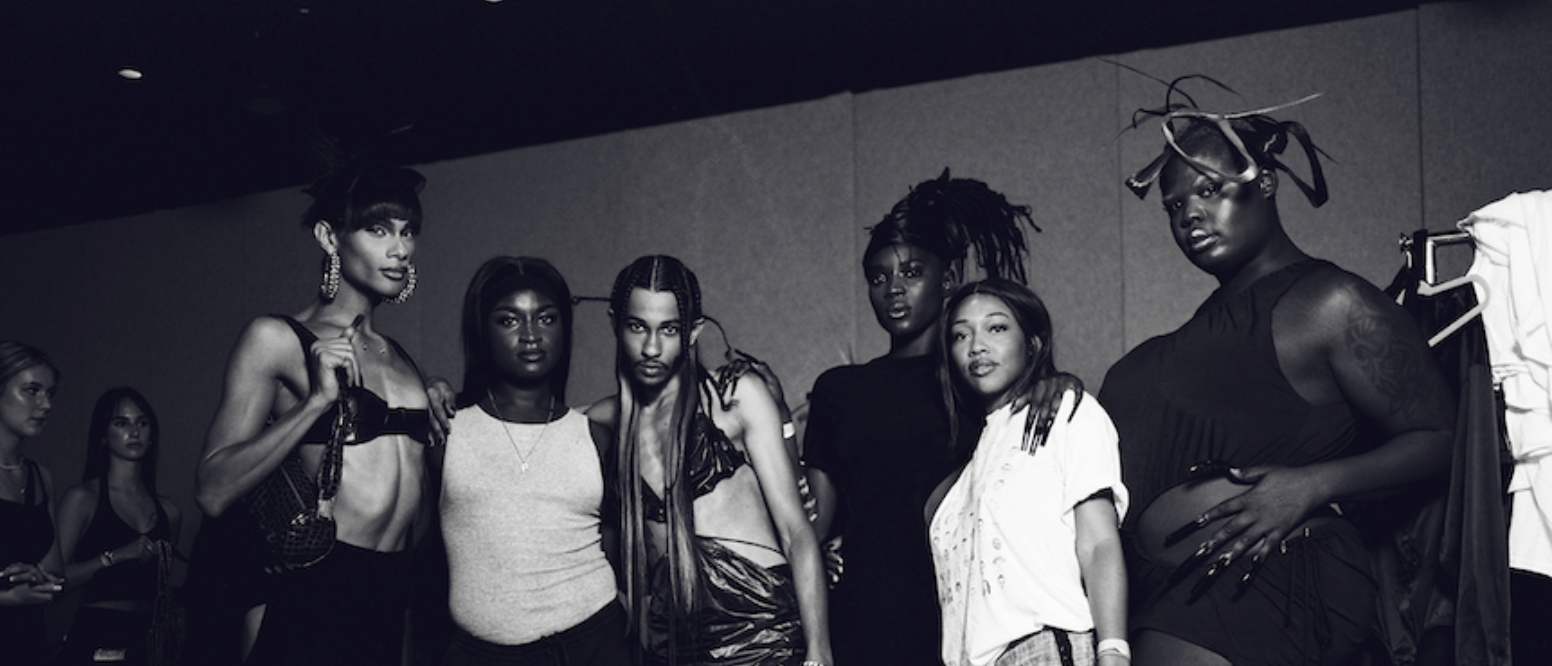
This feature appears in V139, Supermodel, Superhero issue, now available for purchase.
Fashion is no longer about gatekeeping, power, or belittling those that are kept out—instead, the current zeitgeist is shifting toward expression, originality, and, most importantly, community. At the forefront of this push are Pia Davis and Autumn Randolph—the duo behind LA-based brand No Sesso—who are molding the fashion industry into something opposite of the original elitism and ism-filled climate that was once so pervasive. A mainstay on New York’s fashion calendar since 2019, the designers are a part of an energetic group of young and permissive creatives intent on reshaping the fashion industry, and the inner workings of the city, from the inside out.
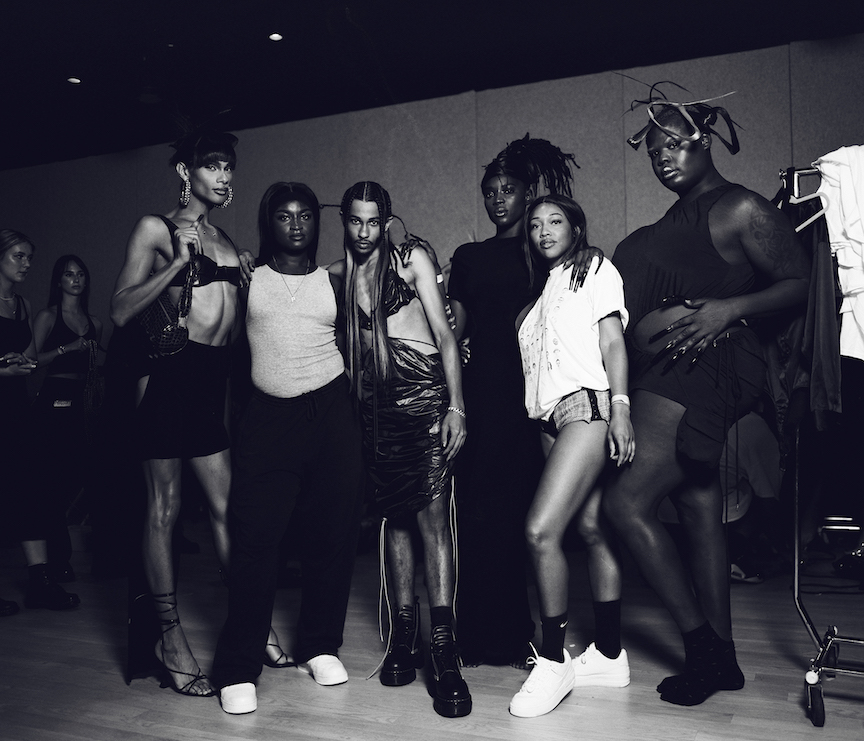
Founded in 2015, No Sesso has been making clothing for every and anyone by sticking to their first instinct of designing solely for their own joy. Named after the Italian phrase, No Sesso, which translates to “no sex/no gender,” the brand was created through a desire of self-expression, embodying this sentiment through clothing that champions wearing what you want. The brand, originally an art collective, hasn’t left its initial starting point—continuing to create wearable, yet conceptual, pieces through patchwork, intuitive cutouts, and fabrics that move at the will of the wearer.
From the label’s Fall/Winter 2022 full-denim looks and intricate patchwork to their Spring/Summer 2023 showing of sultry, barely-there black, mesh, and leather separates, Davis and Randolph continue to push the very boundaries that boxed in innovators like them in the past. They’ve rejected the notion of being politicized—rather, focusing on pouring into their community by creating simply because they want to. Now an integral part of the city’s new guard, the duo are taking the industry by hand—guiding it to fluid and carefree territory through a personal, and wholly, contemporary eye.
Below, Davis and Randolph discuss their journey in the industry, recent Spring/Summer collection, and what they have in store for the future.
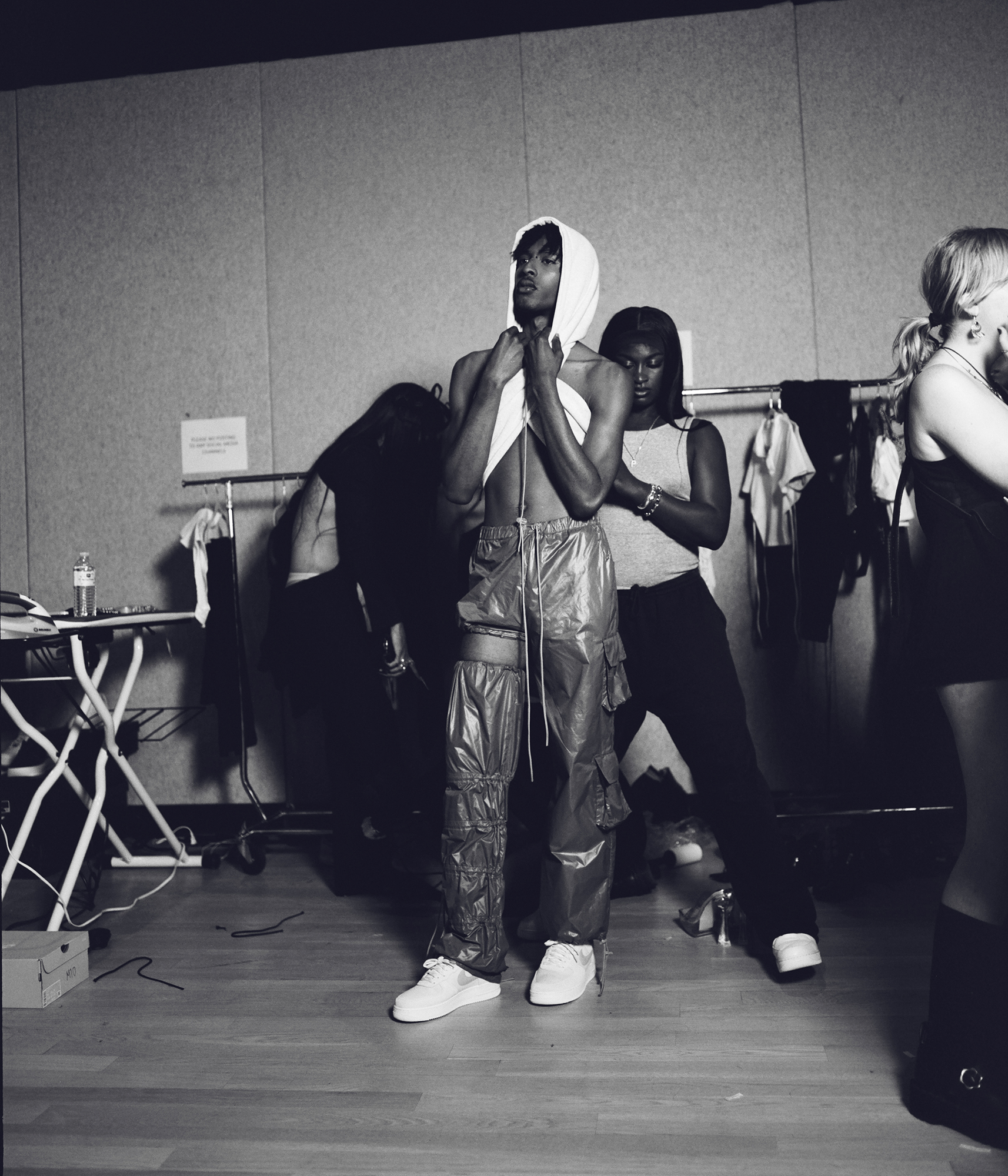
V MAGAZINE: Your Spring/Summer 2023 show was darker and sexier than last season. What was the thought process for this collection and can you take us through your creative process?
AUTUMN RANDOLPH: It was darker; it was more focused, I would say. We really wanted to stay on a strict color palette and do a bit more minimal lines and silhouettes. We wanted to play with the elongated and very micro shapes. Also, our two-in-ones, which are our knit skirts, shorts, and biker shorts honed in on cuts that we liked but we made them a bit more dynamic and sharper.
PIA DAVIS: The collection’s darkness came from where we are in life right now as well—just wanting to show that there are two sides; there’s more than one side to No Sesso. We stepped away from patchwork to show that we could design on multiple levels and play with more ready-to-wear pieces.
V: Your brand started way before the conversations of diversity and inclusion. How do you position your brand in these conversations?
AR: I see us together and separate as two pioneers from two different corners of the earth, who are coming together and trailblazing.
PD: It’s freedom and what it means to you and how you express yourself. It’s the freedom of wearing whatever you want, expressing yourself, and putting it out there. You’re expressing yourself to the world and your mood and how you’re presenting yourself—it’s important. It doesn’t really matter what everyone else thinks about your appearance.
V: Pia, You became the first Black trans woman to present in New York Fashion Week back in 2019. That was a huge accomplishment. At that moment, what were you thinking looking back at it? How has No Sesso changed and grown as a brand?
PD: That is an important moment. I think about how that wouldn’t have happened without the team. We were all working together, making that moment happen. Otto was styling the show, and a lot of friends were wearing the looks and modeling them. That was an important show. It was nice to also be seen on the same level as our peers. We were wishing to be seen in those same spaces as other designers that we are inspired by. That’s what I took most out of it. Also, to be on that platform and to be seen on a bigger scale for everyone that’s a part of No Sesso to be seen for their vision.
V: How would you think that the brand has changed and grown since then?
AR: I would say that we’re more focused, there’s maturity, and there’s more knowledge. It’s grown in a way where at this moment, we’re learning a few lessons. With each collection you learn things. Then hopefully, there’s time in between to learn a few things as well. One of the things that help us grow is prioritizing and sacrificing.
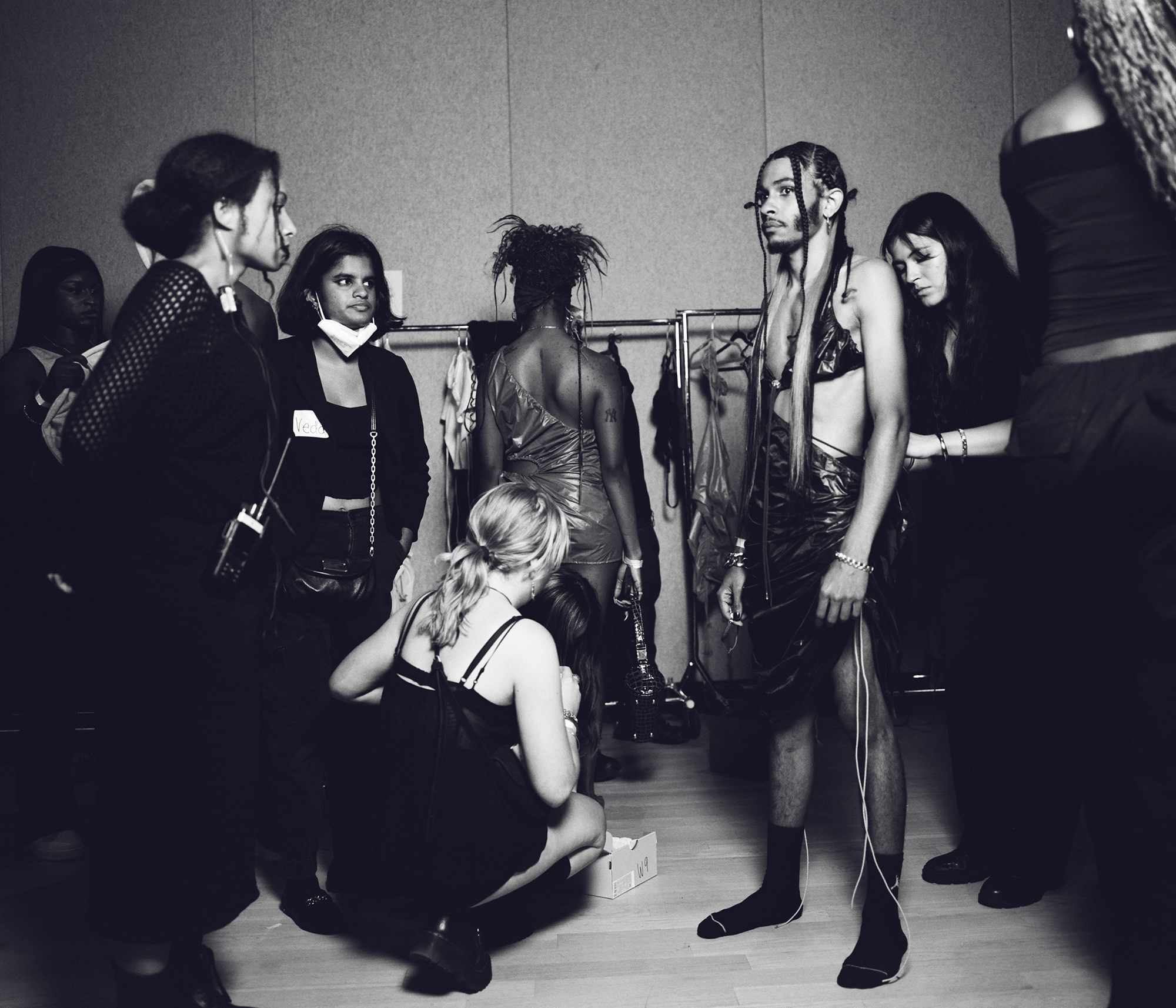
V: I would say your brand is the epitome of inclusion. What was the moment that made you realize that No Sesso was needed in the industry?
PD: It comes from not seeing the clothes that you want to wear in mainstream stores. From not seeing people that look like you on the runway or in fashion photography. At one point, it was very spread out and not happening at all. It’s important for people to see themselves in fashion and to connect to art. That was the importance of starting a brand and wanting to design and create. I was in school, and I tried to get internships, but it was just not happening the way that it was for other people, so I decided to do it on my own.
V: I also wanted to ask about navigating the fashion industry as Black women. How do you think your identities have informed your creative sensibilities?
AR: Before I thought about identity, there was just creativity. I wouldn’t say my identity has shaped my creativity—unless you want to speak to how I grew up in a bit of poverty and I learned to make things work or be clever, but I wouldn’t say that’s part of my identity. That’s just how I grew up. My creativity was going to shine regardless, which is why I have so many different disciplines under my belt.
PD: Going off of what Autumn said, and how I was raised. Being able to create and being given the tools to create at a young age really helps with my creativity. My parents were front row at our recent show, and my entire family was there. It’s nice to have that kind of support.
V: Can you both describe your experiences navigating the industry? Have there been any challenges that you’ve faced? Maybe challenges within the systems within the fashion industry?
PD: I think our biggest tool that we’ve learned is just staying in our lane and not keeping up with the industry. That’s really gotten us far, knowing what was meant for us and not keeping up with what everyone else is doing. There could be more tools and resources in the fashion industry, especially for brands like ours, because most brands that are doing well come from such crazy backgrounds and long generational histories. There’s definitely still work to be done. However, we don’t let that stop us from our goals and what we want to accomplish.
AR: I would say the strangest thing for me to encounter in the industry is the lack of freedom sometimes or how people perpetuate or put you in a box. When it comes to interviews or what people want you to put on the runway. A lot of these people are trying to force you to be somewhere when you’re just trying to be free. It’d be nice to see real true freedom come back. I think that comes into question about what is true. What is genuine? What is organic? There will always be imposing people.
V: Why was fashion design the medium that you chose? Initially, No Sesso started as an art collective.
PD: I just like making clothing. I’m an artist all around, I like to paint, draw, and do sculpture-type projects as well. I think right now, it’s just fun to design clothing and to express that to tell stories. In the background, there are always other things being done, like drawing or sculptures.
V: Would you’d ever switch to a different medium or focus less on fashion and more focused on sculpture or something? Will it always be kind of a mix?
PD: There may be a mix. I do think about sculpture and interior design as well. I’m leaning toward getting into that a little bit more. Also, performance dancing. Our backgrounds are not just designing; they’re definitely more, which is really cool.
AR: I’m not at the moment, just because I think the world’s still spiraling. We’ve wanted to do a fashion opera. That’s just channeling things to bring into realization one day. Incorporating live music, live performance, and dance. At a certain point, for me at least, I think people who like us know we fuse everything together.
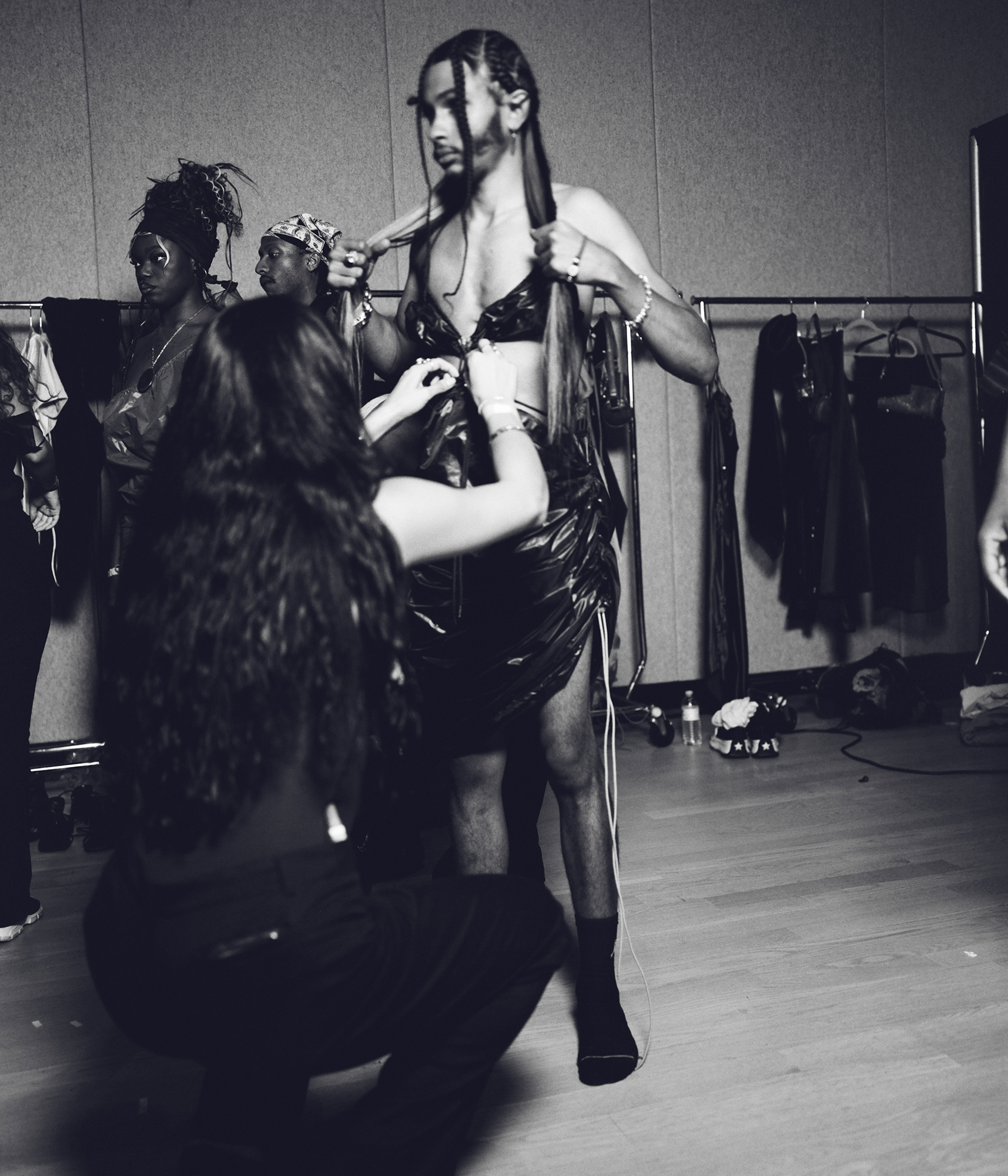
V: What are your wildest dreams for the brand? What do you feel the future holds?
AR: I would want to get to a place where we get to work with the best of the best; seamstresses, pattern makers, and people who are so skilled at their job. We’re in that realm of learning and experiencing.
PD: I really like fun collaborations, but not even just with brands, I would say objects, or even restaurants. Showing the collaboration, but not getting closed down. Just getting into it a little more.
V: I know that you’re both in between New York and LA as an independent label. How would you define the New York fashion scene in today’s context?
PD: There are some really sad fashion people in the New York scene, and then there are also just a lot of basic content creators. You can tell the people who are actually from New York, and the people who aren’t from New York. I think it’s just based on that, and it’s oversaturated in a way.
V: What do you think is the importance of community in regard to the New York fashion scene? From my experience, I moved here to New York and was looking forward to the community, but sometimes that’s non-existent. What’s the importance of community both as individuals and as a brand?
AR: I think it’s very important. There are a lot of communities and tribes all throughout New York. It’s finding what’s best for you and hoping that people are responsive. I think community is important because you can energetically feel when you have support and when you don’t. I think just growing up, you come to realize that when you look for certain people, and they’re not there, you may burn bridges. But then you realize that building relationships and maintaining them is important. Those people will pour back into you or your brand and will want to support you. It’s a two way street. I see a lot of community in New York, and within a lot of New York brands, I think they’re thriving because of that [community]. I’ve always found that to be important, even before it was huge.
PD: Again, [for] Black and Brown faces, this sense of community is something that comes naturally. I think that what we offer is different forms of community. It all goes hand in hand, the artsy fashion scene and the nightlife scene—very beautiful, it goes together.
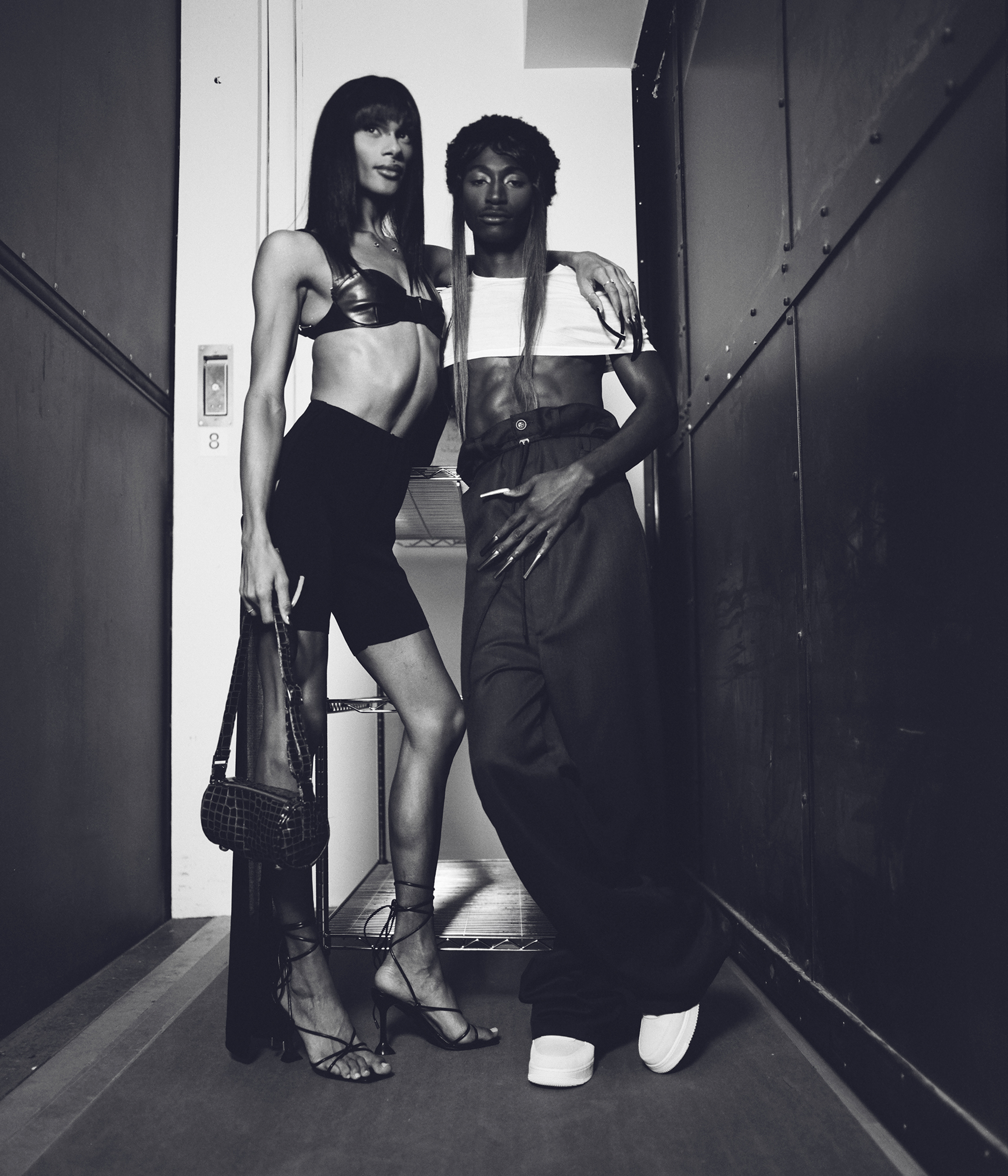
Discover More
